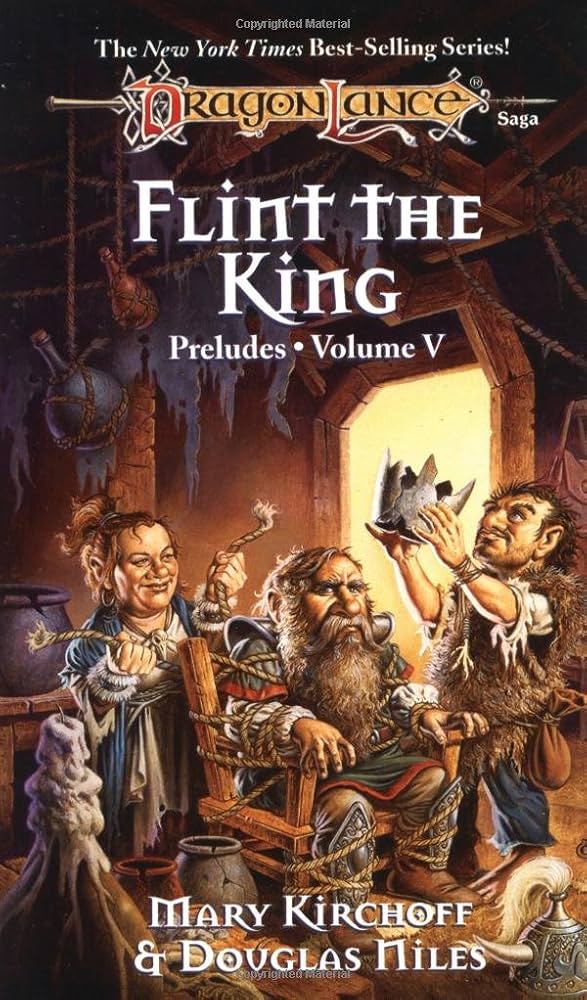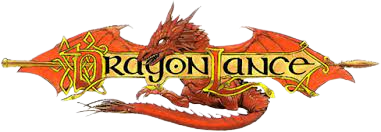Flint the King

Table of Contents
ToggleOverview
Flint the King is a rich, character-driven entry in the Dragonlance universe and part of the Lost Histories series. This novel explores the formative years of Flint Fireforge, the gruff and beloved dwarf who would later join the Companions of the Lance. Set before the events of the War of the Lance, the novel reveals Flint’s early adventures, emotional foundations, and the unlikely bonds that shaped his destiny.
With humor, heart, and unexpected darkness, Flint the King blends political intrigue, mythic legacy, and personal growth. It’s a story about heritage, stubborn loyalty, and the search for identity amid shifting alliances.
Main Character: Flint Fireforge
A master metalsmith of Hill dwarf descent, Flint is proud, pragmatic, and deeply rooted in his traditions.
Though content in his workshop, Flint is drawn into a conspiracy involving dwarven politics, ancient artifacts, and looming war.
As the story unfolds, Flint reveals the bravery, integrity, and quiet grief that make him a future hero.
His journey balances stubborn dwarf pride with humility and growing emotional depth.
Supporting Characters
Perian Cyprium – A noble and idealistic dwarf who believes in unifying the clans. Her vision inspires Flint and introduces him to a larger destiny.
Tyorl – A Kagonesti elf with whom Flint forms a tense but ultimately profound friendship. Their relationship challenges his biases and offers one of the book’s strongest emotional arcs.
The King of Hillhome – A shrewd ruler caught between tradition and change. His machinations pull Flint into political games he would rather avoid.
Dark Dwarves and Cultists – Antagonists seeking to exploit dwarven pride and hidden relics for power, providing the novel’s darker tensions.
Setting
The novel moves through several dwarven strongholds, including Hillhome, and explores the internal divisions between Hill dwarves, Mountain dwarves, and other clans.
The dwarven settlements are brought to life with vivid detail—stone halls, forge-lit caverns, and ancient tombs steeped in ancestral memory.
There are also significant scenes in elven woods and borderlands, expanding the cultural contrast and exploring themes of mistrust and eventual respect between dwarves and elves.
Plot Summary
Flint, a metalsmith of modest renown, is invited to Hillhome under the pretense of a royal commission. But what begins as a diplomatic journey quickly becomes entangled in intrigue.
Perian Cyprium believes Flint may be connected to an ancient dwarven prophecy. As old relics resurface and dark forces gather, Flint finds himself hunted, honored, and manipulated.
Reluctantly, he becomes a central figure in efforts to preserve dwarven unity. Along the way, he forges new bonds—particularly with Tyorl—and begins to question the limits of his own worldview.
The climax involves an attempt to prevent civil war and safeguard dwarven heritage. Though he doesn’t seek glory, Flint walks away a legend.
Themes
Identity and Heritage – Flint must reconcile his personal beliefs with his cultural legacy, exploring what it means to be a dwarf among dwarves.
Reluctant Heroism – Flint embodies the reluctant hero archetype, pulled into greatness by circumstance and principle rather than ambition.
Unity Through Difference – His evolving friendship with Tyorl shows the possibility of mutual respect across racial and cultural lines.
Tradition vs. Change – The tension between ancestral pride and modern challenges forms the core of the novel’s political and emotional stakes.
Tone & Style
Flint the King blends warm, grounded humor with moments of high drama and quiet sadness. The tone shifts naturally between personal reflection, epic destiny, and character-driven banter.
The prose is intimate, often mirroring Flint’s gruff internal monologue, but expands into poetic richness during scenes of legend, memory, or confrontation.
It reads like a tale told by the hearth—with soot, sparks, and soul.
Reception
Flint the King is praised for:
Deepening a fan-favorite character without undermining his original charm.
A compelling portrayal of dwarven society and politics.
Emotional resonance, especially in Flint’s unlikely friendship with Tyorl.
Some critiques:
Pacing slows at times due to internal politics.
Readers unfamiliar with Flint may find the stakes smaller than other Dragonlance epics.
Final Thoughts
Flint the King is a quiet triumph in the Dragonlance saga. It offers not only the backstory of a beloved companion, but also a deeply moving meditation on friendship, duty, and legacy.
Flint never wanted to be a hero—but in standing by what mattered, he became one. This novel shows how even the most grounded hearts can shape legends.
Recommended for:
Longtime Dragonlance fans wanting more depth on the Companions.
Readers who enjoy character-driven fantasy rooted in culture and emotion.
Anyone seeking a tale of grumpy warmth, reluctant courage, and enduring loyalty.
